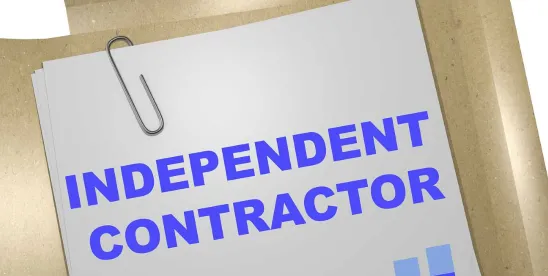On May 1, 2025, the U.S. Department of Labor’s (DOL) Wage and Hour Division (Division) issued Field Assistance Bulletin (FAB) No. 2025-1 (“FAB 2025-1”), announcing that it is currently working to reformulate the test as to how independent contractor status is determined under the Fair Labor Standards Act (“FLSA”).
Although it is unclear what contours the revised rule will eventually take, FAB 2025-1 signals a clear intention to make it easier for businesses to classify workers as independent contractors.
The rulemaking process will take time. FAB 2025-1 accordingly provides that, during the interim, the DOL will no longer enforce a 2024 rule established under the Biden administration. The 2024 rule, which consisted of a non-exhaustive multi-factor test, is largely viewed as placing a difficult hurdle with respect to independent contractor classification.
FAB 2025-1 relaxes the DOL enforcement standard by reverting to the “economic reality” framework outlined in Fact Sheet #13 (July 2008), as informed by Opinion Letter FLSA2019-6. The “economic reality” framework asks whether the worker is an independent contractor in business for themselves, or an employee economically dependent on the business they serve. While this does not involve a single rule or test, significant factors include:
- The extent to which the services rendered are an integral part of the principal’s business.
- The permanency of the relationship.
- The amount of the alleged contractor’s investment in facilities and equipment.
- The nature and degree of control by the principal.
- The alleged contractor’s opportunities for profit and loss.
- The amount of initiative, judgment, or foresight in open market competition with others required for the success of the claimed independent contractor.
- The degree of independent business organization and operation.
As compared to the 2024 rule, many believe that the “economic reality” framework provides more flexibility and favors independent contractor classification. The Division’s press release accompanying FAB 2025-1 states that going back to this “longstanding” framework “provides greater clarity for businesses and workers navigating modern work arrangements while legal and regulatory questions are resolved.”
Although this change in DOL enforcement policy is a welcome change for businesses, caution when making classification decisions is still appropriate, for the following reasons:
First, businesses should remain mindful that state law may apply and have stricter classification requirements with respect to independent contractors.
Second, the 2024 rule, which is currently facing multiple legal challenges in federal court, will remain in effect for the purposes of private litigation. However, the Division is reconsidering the rule, including whether to rescind and replace it with a different standard.
Third, the independent contractor pendulum may swing right back to a stricter test if a Democrat next takes the White House.
As the Division’s approach to worker classification continues to unfold, employers should closely follow new developments and consult legal counsel for guidance on worker classification matters.





 />i
/>i
